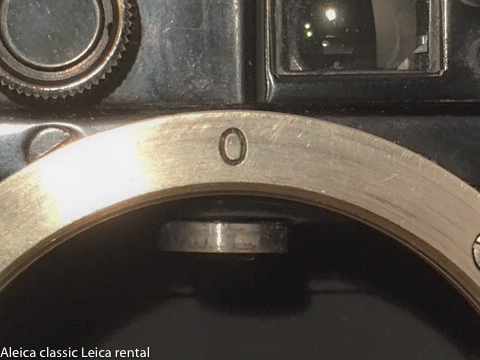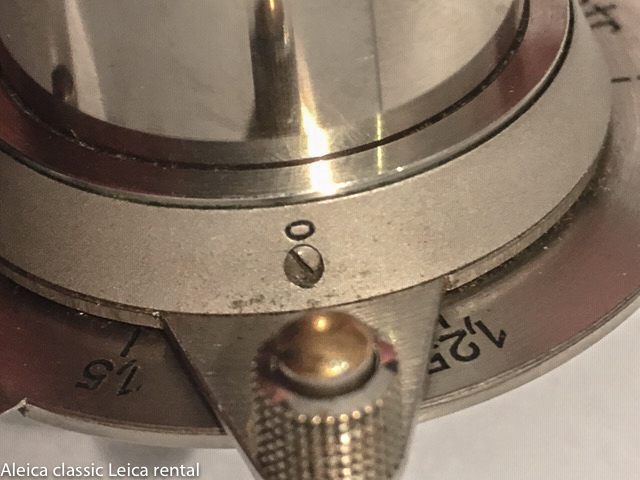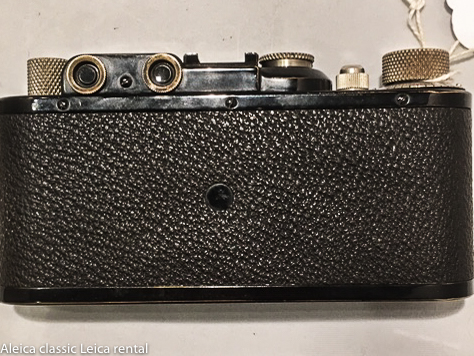The peephole
The first Leica models were mainly made of sheet metal. Not until 1940 the IIIc was sturdier as it was build with a die cast body.
Until that time it was difficult to fix the exact distance from lens to film flange. For the Leica 1a and the non-standard 1 model c the distance was adjusted for each camera and lens. At the camera back and in the film plate a small 7mm hole was made. Through this hole and with a loupe the distance to the lens was adjusted by adding shims. They were focusing on the aerial image rather than a ground glass, it was more accurate.
You can recognize these cameras’s as they have this ‘peephole’ in the camera back. Somewhere between serial number 102.000 and 106.000 (1932) Leitz adjusted the production process in such a way, that the film flange always is 28,8 mm. The peephole disappears from the camera back.
The 0 on the lens mount and the on the lens itself.
Not only the distance within the camera has to be standardised, but also the camera in combination with the lens. It could be that the lens was somewhat shorter or longer. Then there was still the problem with accurate focussing. By the end of 1931 this was also under control. Both camera and lens were engraved with a ‘0’ mark. On the lens this was engraved for instance on the Depth of focus scale (Elmar 5 cm and Elmar 3,5 cm). On the camera the 0 was engraved on the lens mount.
Around 1933 the lenses don’t have the 0 marking anymore. The cameras keep the engraving until the mid thirties.


